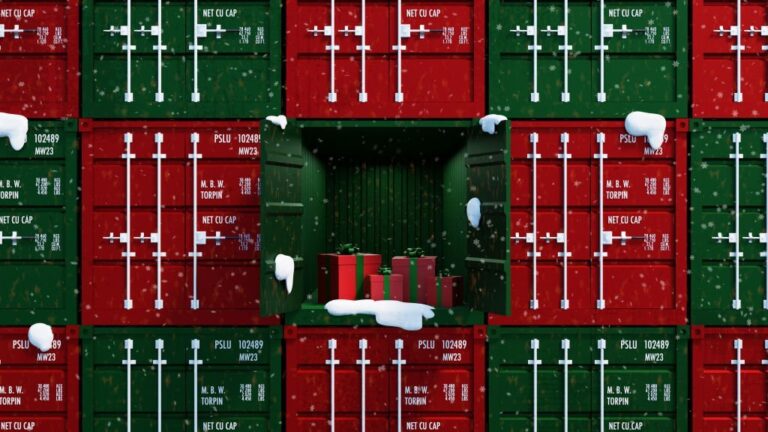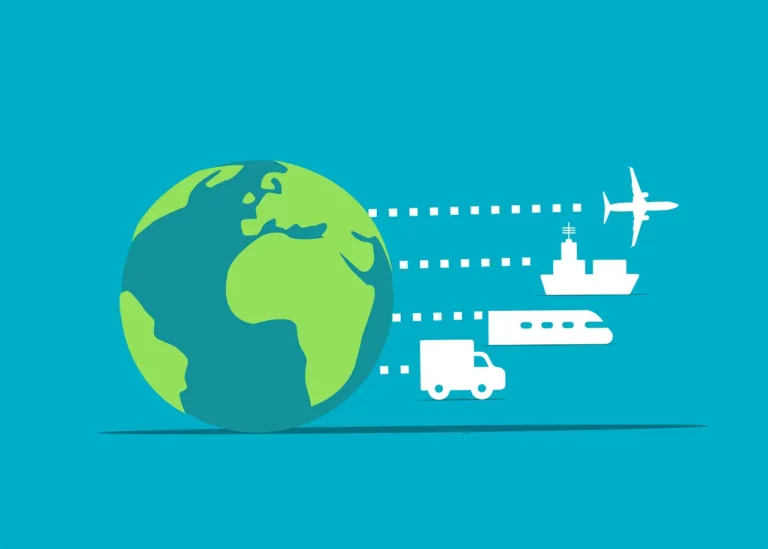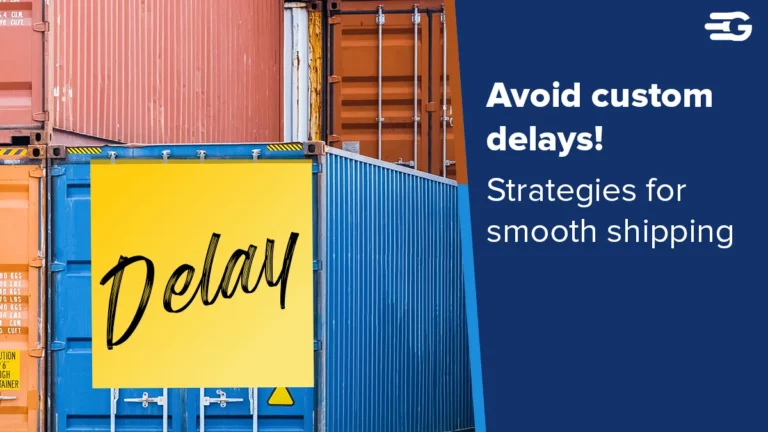Navigating the Essentials of Certificate of Conformity (COC): A Comprehensive Guide
With standards a cornerstone of commerce and quality as the currency of trust, the Certificate of Conformity (COC) emerges as a strong guardian. It’s not just a mundane document, it’s the fortress ensuring that products meet the rigorous demands of global markets. The COC as a vital technical document signifies that a product has successfully navigated the complex web of regulations, meeting each benchmark with precision and diligence.
During a time in which transparency is a matter of paramount importance, the COC stands out as an example of reliability and integrity in trade. In this blog, let’s explore the significance and impact of the Certificate of Conformity, examining its crucial role in shaping the landscape of commerce and building consumer confidence.
What is a Certificate of Conformity?
Essentially, it is the passport for your product. In the same way that you need a passport to travel to different countries, your product needs a certificate of compliance to sell in different countries. Without it, you might encounter significant fines or delays in customs clearance for your product, reflecting supply chain costs drastically.
Who issues these COCs?
Well, it depends on the product and the country you’re dealing with. In some cases, it could be a government agency responsible for regulating trade and commerce. In others, it might be a third-party organization that specializes in certifying products. Regardless of who issues it, the important thing is that your product has one.
In a nutshell, COC is all about compliance. When you’re dealing with international trade, there are a lot of rules and regulations to navigate. Having a Certificate of Conformity shows that you’ve done your homework and that your product meets all the requirements. It gives both you and your customers peace of mind, knowing that the product is safe, reliable, and legal.
But it’s not just about compliance,; it’s also about customer assurance and supply chain visibility. Let’s face it, consumers these days are more informed than ever. They want to know that the products they’re buying are of high quality and meet all the necessary standards. By providing a COC, you’re giving them that assurance.
Acquiring a Certificate of Conformity
Typically, the manufacturers hand out the COCs since they’re the ones who know the ins and outs of the product best. They’ll thoroughly verify that the product complies with all required standards and specifications before granting the COC. Sometimes, stakeholders employ independent laboratories to conduct testing and issue Certificates of Conformity (COCs). These stakeholders include manufacturers, importers, exporters, regulatory bodies, and certification agencies.
Manufacturers often engage independent labs to verify the compliance of their products with relevant standards and regulations before entering the market. Importers and exporters may also utilize independent labs to ensure that products meet the requirements of the target market.
Regulatory bodies may contract independent labs to conduct random or systematic checks to enforce compliance with regulations. Additionally, certification agencies may rely on independent labs to assess products for certification purposes, ensuring that they meet specific quality and safety standards.
Ultimately, the involvement of independent laboratories in COC issuance enhances trust and credibility in the marketplace, ensuring that products meet the highest standards of quality and compliance.
How to Obtain a Certificate of Conformity
Step one, reach out to the manufacturer or the testing lab. Let them know you’re in the market for a COC and provide them with all the relevant details about your product. They’ll need to know things like what the product is, what standards it needs to meet, and where it’s going to be sold. Armed with this info, they’ll start the process of verifying compliance.
Next up, it’s time for some testing. This is where the real process starts. The manufacturer or lab will put your product through its paces, subjecting it to a battery of tests to make sure it meets all the requirements. Whether it’s checking for safety, quality, or environmental impact, these tests are crucial for ensuring that your product is up to snuff.
Once the tests are done, it’s time for the moment of truth: the issuance of the COC. If everything checks out, congratulations! You’ve officially got yourself a COC. This document is like your product’s badge of honor, proudly proclaiming to the world that it’s met all the required standards and specifications. It’s your ticket to trade compliance and customer assurance.
If things don’t go according to plan, the manufacturer or lab will work with you to identify any areas where your product falls short and come up with a plan to address them. It might require some time and effort, but achieving quality outcomes is often worth the wait.
That’s the lowdown on how to acquire a Certificate of Conformity. It’s all about working closely with the manufacturer or testing lab, putting your product through its paces, and making sure it meets all the necessary standards. With a little bit of patience and perseverance, you’ll have that COC in hand in no time.
Importance of COC in International Trade
International trade relies heavily on the Certificate of Conformity (COC). It’s not just a routine requirement; it’s your assurance of smooth sailing in the global marketplace. Precisely, it is as vital as a compass on a voyage, guiding businesses through the intricacies of international trade compliance with precision and confidence.
Role of COC in Market Compliance
Customs are the first checkpoint in the supply chain that extends over international borders. In this context, COC as a document corroborates the customs officials that your goods meet all the necessary regulatory requirements. With COC in hand, you can breeze through customs clearance like a pro, avoiding any pesky delays or headaches along the way.
Furthermore, the COC isn’t just about getting your goods past customs – it’s also about winning over consumers. Businesses demonstrate their commitment to quality, safety, and regulatory compliance, instilling confidence in consumers regarding the integrity of the products they purchase.
This transparency and adherence to standards not only build trust but also enhance the brand’s reputation, fostering long-term loyalty and consumer satisfaction. Thus, the COC serves as a dual-purpose tool, ensuring both regulatory compliance and consumer confidence in the global marketplace.
Differences Between Certificates
Having meddled with the term compliance, the Certificate of Conformity (COC), the Certificate of Compliance, and the Certificate of Analysis (CoA), all may sound similar, but trust me, they each have their unique role to play in the world of product verification.
COC vs. Certificate of Compliance vs. Certificate of Analysis
There is COC and the Certificate of Compliance. Now, these two are often used interchangeably, but there are some subtle differences. The COC is like the big-picture overview – it’s a document that verifies that your product meets certain standards or specifications. It’s your general assurance that your goods are up to snuff and ready for market.
On the other hand, the Certificate of Compliance dives a bit deeper. It’s like the nitty-gritty details version of the COC. This certificate typically contains more specific information about the standards and regulations your product complies with. So while they may serve similar purposes, the COC is more of a broad stroke, while the Certificate of Compliance gets into the weeds a bit more.
While the COC and the Certificate of Compliance focus on verifying that your product meets certain standards, the CoA is all about the test results. It’s like your product’s report card, showing exactly how it performed in various tests and measurements. From chemical composition to physical properties, the CoA provides a detailed breakdown of your product’s characteristics. So while the COC and the Certificate of Compliance are more about saying, “Yep, this product meets the standards,” the CoA is about showing the proof behind those claims.
But why do we need all these different certificates anyway? The COC gives you the big-picture assurance that your product meets certain standards. The Certificate of Compliance delves a bit deeper into the specifics of those standards. And the CoA gives you detailed test results to back it all up. Together, they form a comprehensive package that proves your product is top-notch and ready for market.
So there you have it – the differences between the COC, the Certificate of Compliance, and the Certificate of Analysis. While they may sound similar, each certificate plays a unique role in ensuring that your product meets the necessary standards and regulations. So next time you’re navigating the world of product verification, remember to choose the right certificate for the job.
Key Components of a COC
A typical COC includes details like the product name, model number, and any other identifying information that sets your product apart from the rest of the pack. Think of it as the first step in making sure your product is easily recognizable and distinguishable from others on the market.
Next up, we’ve got manufacturer or importer details. This section tells you who’s responsible for bringing this product into the world. Whether it’s the original manufacturer or an importer who’s bringing the goods into a new market, this information is crucial for tracking down the source of the product and ensuring accountability.
Further, it includes the compliance statement is like the heart and soul of the COC – it’s a declaration from the manufacturer or importer that the product meets all the necessary standards and regulations. It’s their way of saying, “Yes, our product is good to go, no need to worry.”
Besides these, there are supporting documents such as test reports, inspection certificates, and other documentation that provide evidence that the product complies with the required standards. Without these supporting documents, the COC would just be a piece of paper with a fancy stamp on it – not very convincing, right?
Last but not least, the conformity assessment procedure outlines the steps that were taken to ensure that the product meets the necessary standards. It’s like a roadmap that shows how the product went from concept to reality, while the technical documentation provides details about the specifications, drawings, and test results that reflect the product’s design and performance.
Components of COC, from product identification to compliance statements to supporting documents, each piece plays a crucial role in ensuring that your product is compliant with the necessary standards and regulations. So next time you’re looking at a COC, remember to pay attention to the details – they could mean the difference between a product that’s good to go and one that’s not quite up to snuff.
Navigating the intricacies of a Certificate of Conformity (COC) can be daunting, given its importance in international trade.
Here service-oriented companies such as GoComet offer impeccable assistance to businesses throughout their compliance processes. By seamlessly integrating COC management into their supply chain workflows, GoComet’s innovative platform offers advanced features such as automated documentation, regulatory checks, real-time compliance monitoring and task management. This ensures accuracy, efficiency, and regulatory adherence throughout the COC process. With seamless integration with existing systems and collaboration tools, GoComet empowers businesses to navigate COC requirements with ease, facilitating smoother customs clearance and strengthening global trade partnerships. With GoComet as their ally, businesses can confidently embrace COC compliance, equipped with the support and technology needed to excel in the competitive realm of international trade.
So, to be precise, we now know how important as COC is for a shipment. Like the North Star guiding ships through uncharted territories, the COC steers businesses towards compliance, ensuring smooth passage across regulatory seas. Its significance transcends mere paperwork, embodying a commitment to quality, safety, and integrity in global commerce. Armed with a deep understanding of COC essentials, businesses chart a course towards success, forging resilient connections and propelling growth amidst the dynamic currents of the global marketplace.






